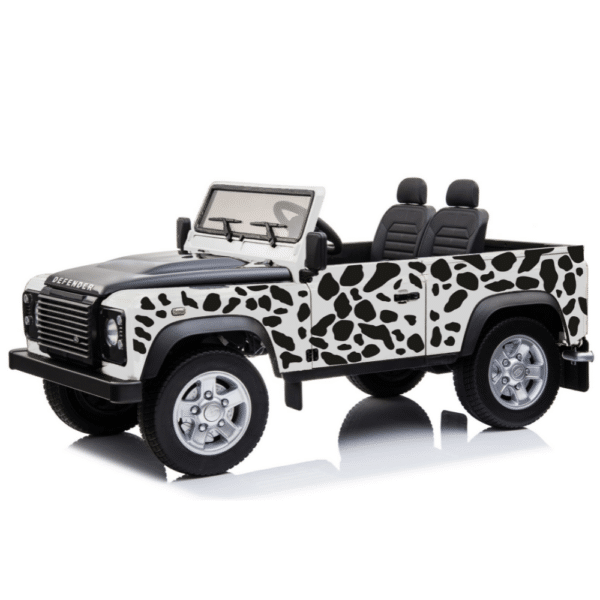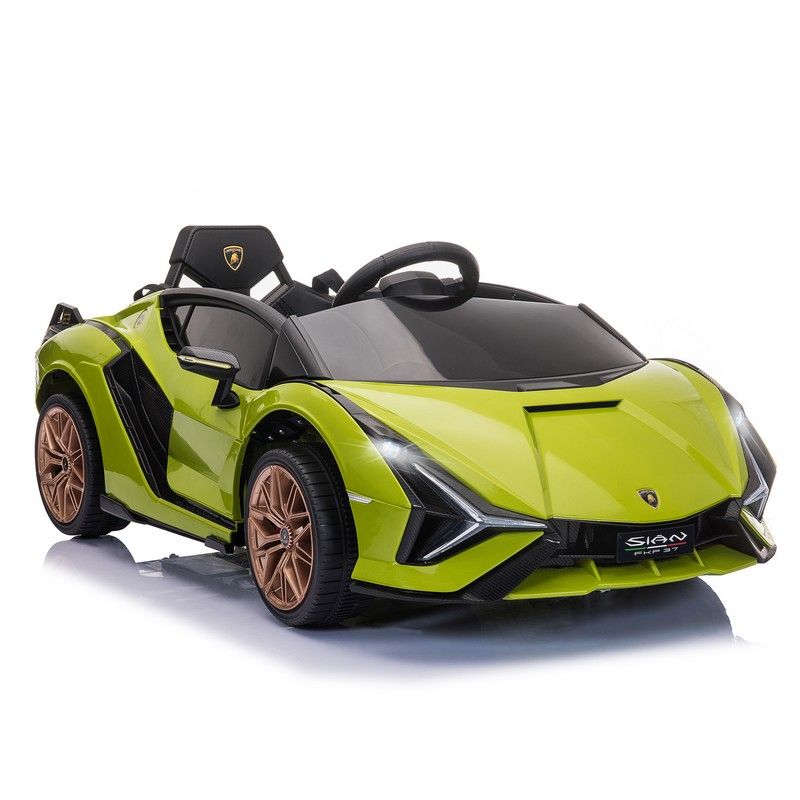Good Advice To Selecting Remote Control Childrens Cars
Good Advice To Selecting Remote Control Childrens Cars
Blog Article
What Is The Battery Life Of An Electric Ride-On Kids Car?
Understanding the battery's lifespan and the charging time of an electric ride-on children' car is essential for the safety of your children and optimum performance. Here's everything you need to know about - Type of battery
The majority of electric vehicles for children can be recharged, and usually utilize lithium-ion battery or lead-acid battery. Lithium-ion batteries generally offer longer battery life and faster charging times than lead-acid batteries.
Battery Capacity
The battery capacity is expressed in amp hours (Ah) and watt hours (Wh). This is the length of time a ride-on can run with a single charge. Battery capacity is vital since it determines the length of time the ride-on vehicle can run before charging.
Run Time -
The time of a car's runtime is how long the vehicle can be operated continuously with only one charge of battery. It is based on a variety of variables such as the motor, the battery, the terrain, and the weight of the rider.
The typical run time for electric ride-on cars is between 30 minutes to two hours. Certain battery packs with high capacity may provide longer time-to-run.
Charging Time
Charging time is the amount of time needed to recharge the battery fully after it is depleted. The charging time varies depending on the battery's capacity, charger specifications, and charging methods.
In general, the charging times for electric ride-on cars range from 8 to 12 hours to complete a charge. Certain models offer faster charging particularly those with lithium-ion batteries.
To ensure safety and a long-lasting battery life, it's important to recharge the battery in accordance with the manufacturer's instructions. The battery's overcharging or undercharging can affect its performance and lifespan.
Charging Method
Electric ride on vehicles come with chargers that plug into a regular home outlet. Some models have fast-charging features or smart charging systems that monitors the battery's charge status and adjusts the rate of charging accordingly.
To avoid damaging the battery or the electrical system ensure that the charger and the port of the ride-on are compatible.
Additional Batteries
Certain electric vehicles allow the purchase of extra or spare batteries. This could extend play time. You can replace the worn-out batteries with new ones that are fully charged, so you'll have less time between sessions.
Understanding the battery life and charging time of an electric ride-on children' car ensures that your child has uninterrupted playtime and fun adventures as they explore their surroundings. Following proper charging methods and charging the battery on a regular basis can prolong the battery's life. Take a look at the recommended kids ride on cars for website examples including digger ride, toy cars, digger ride, toy a car, electric toy car, ride of car, childrens electric ride on, electric ride on, childrens digger, toy a car and more. . 
What Is The Main Difference Between Indoor And Outdoors Model Cars For Children?
Models of kids' cars include specific features for various environments and usage scenarios regardless of whether they're indoors or outdoors. Here are some of the differences in these car designs - Indoor Use Cars
Size and weight-Cars intended for indoor use will be smaller in dimensions and weight and therefore easier to maneuver around narrow areas. These include living rooms as well as playrooms. They are compact enough to fit in narrow spaces and corners and avoid damaging walls or furniture.
Low Ground Clearance - Indoor use vehicles have a low clearance to prevent them from getting stuck or getting caught up upon obstacles like rugs, carpets, or thresholds. This allows for smooth, free movement across indoor surfaces.
Smooth Wheels - The wheels of indoor use automobiles are typically made of smooth materials such as plastic or rubber to offer traction and grip on smooth surfaces, such as hardwood flooring, laminate flooring or tile. These wheels are designed for indoor use, to reduce noise, and ensure that surfaces are protected from scratches.
Limited Speed - Indoor vehicles are typically restricted to an lower speed to maintain safety and control. This can prevent accidents or collisions with furniture, walls or any other obstacles that are commonly found indoors.
Outdoor Use Cars -
Durable Construction - Cars intended that are designed for outdoor use are constructed from sturdy materials. They are made of tough plastics or metals to endure the harsh elements outdoors like humidity, sunlight and temperature fluctuations. They are less prone to be afflicted by tears and wear that result from exposure to outdoor environments.
Higher Ground Clearance for Outdoor Use vehicles have greater ground clearance to maneuver through uneven terrain, bumps, or other obstacles that are encountered outside. This lets the vehicle traverse rough terrain without damage or a snag.
Traction Tires -- The tires that are used on vehicles that are outdoors usually have treads or patterns designed to increase grip and traction when driving on surfaces that are uneven or slippery. This aids in maintaining control and stability while driving on uneven terrain.
Weather Resistant - Outdoor use vehicles may include weather-resistant elements such as sealed electronics, waterproof casings, or rust-resistant materials to protect against environmental damages and moisture. The vehicle can be subjected to mud, rain, and puddles, with no loss of performance.
Outdoor cars are typically faster to accommodate the wide open spaces, and longer distances encountered outside. This could provide an thrilling and exciting riding experience to children exploring outdoors.
Consider these features and characteristics when selecting a car to drive your child's car. It will be tailored to the specific environment and use that you are thinking about, whether it is outdoors, indoors or both. You can ensure a long-lasting, fun and safe playing experience. Take a look at the recommended discover more on remote control childrens cars for website info including pedal car, two seater electric cars, lambo toy car, electric rideons, childrens digger, lambo toy car, car toy car toy, childs ride on car, toy car, electric toy car and more. . 
What Kind Of Children's Remote-Controlled Cars Are There? What Are The Benefits And Disadvantages?
Remote control cars for children, also known as RC cars, or remote-controlled vehicles, come in various sizes and styles. They also come in a variety of price ranges to suit different budgets and tastes. This article will give you an overview of the different types, sizes and prices of remote-controlled cars for children and their advantages and disadvantages.
Electric RC Cars – These are battery-powered, remote-controlled vehicles that can be used both indoors and out. They are available in many types, including buggies, trucks, and sports cars.
Nitro RC Cars – Gas powered remote controlled cars which offer greater performance but need more care. They tend to be larger and are more expensive than electric RC vehicles.
Scale Models - Remotely controlled replicas of real-life vehicles such as trucks, cars, aircrafts, and boats. Scale models come in different scales, ranging from 1 -10 to 1 -24 With larger scales offering more detail and realism.
Sizes -
Remote-controlled cars for children come in different dimensions. They range from small miniature replicas to larger-scale copies. The size of the car can influence its speed, performance, and handling characteristics.
Micro-sized cars are small and lightweight. They are ideal for indoor use with younger children. Cars with bigger sizes are more powerful, durable and are thus ideal for off-road or outdoor racing.
Prices
Prices for remote-controlled children's cars will vary based on the features, brand and quality.
Micro-sized electric and nitro powered RC car can be found in sizes that range between $20 and $100.
Models and top-of-the-line hobby RC cars range from a few hundred dollars up to 1000 dollars, depending on the amount of detail.
What are the pros and cons?
Pros -
Entertainment - Children's remote control vehicles can offer hours of entertainment and excitement for children and adults alike.
Skill Development - Operating an RC car helps children develop eye coordination, spatial awareness and problem-solving skills.
Social Interaction: RC vehicles can be great for social interaction with family and friends.
Customization – A lot of RC vehicles can be customized with aftermarket modifications, parts and accessories that enhance the performance and appearance.
Cons -
Cost - High-end models that have advanced features, such as hobby-grade cars, can be expensive.
Children may find it difficult to control the RC cars initially.
Maintenance - Vehicles with RC engines require regular maintenance. This includes cleaning, lubrication and cleaning as also periodic repairs and replacement of parts.
Safety Issues RC cars pose a safety danger, and could cause electrical hazards, collisions and falls if used without adult supervision.
All children of ages can love remote-controlled cars. However, it is important to consider aspects like cost, size and security prior to deciding on the right model. Hobby-grade RC cars are better for children who are older and more enthusiastic and simpler models are ideal for children who are younger and beginner children. Read the recommended remote control childrens cars kidscars.co.uk info for website examples including toy a car, childrens digger, car for toy, pedal car, car on ride, car toy car toy, ride ons, toy cars toy car, electric rideons, ride on car and more. .